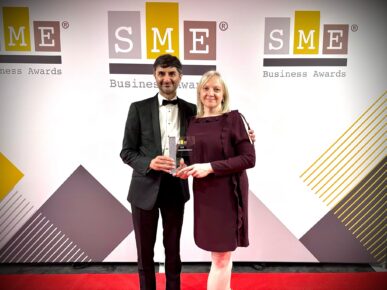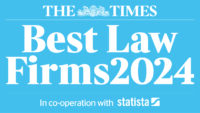Technology disputes can become a serious issue for any organisation – be that on the supplier or customer side. Insight asks Simon Carroll, dispute resolution partner and commercial litigation lead, how companies can safeguard themselves from a potential dispute; and how they can deal with one should it arise.
What are the most common causes of conflict in the tech sector?
Technology disputes are certainly on the rise. From a commercial standpoint, we’re yet to see the full impact (and fall-out) of many businesses having taken quick steps to move aspects of their work ‘online’ during the pandemic. These may well lead to a spike in contractual claims over the next couple of years.
However, in the short term, data security and protection issues continue to be a ‘live’ area of concern for many businesses. Firstly, the challenge of keeping track of a changing legislative landscape and translating complex legislation into simple practice. Secondly, increasingly nuisance parties are seeking to commercially exploit businesses who fail to keep up with requirements – whether through not having the right cookie policy or otherwise – by using the civil courts to sue for damages, in claims where loss is arguably not genuinely incurred.
From an IT or a software perspective, allegations of a contract breach and misrepresentation remain the prime, and often most expensive battleground, often dealing with allegations of delay and implementation. Although not always, these claims typically involve issues over pre-contract due diligence as to system capability, and issues with the contractual clarity over the granular work to be done.
How important is it to develop a quick and decisive strategy for resolving disputes?
The main challenge in technology disputes, particularly in an IT or software context, can be the large investment in time needed to ascertain exactly where the fault lies. Contractually, these issues are often complex, and need a lot of time and input from the business itself, the lawyers, and potentially also from external experts. This can have a significant cost impact. As such, giving clear thought to, and agreeing, sensible dispute resolution provisions that promote an early and structured form of dispute resolution strategy can have a real benefit. Whilst there is no ‘one-size fits all’ answer, a tiered dispute resolution clause mandating engagement and discussions, and potentially mediation, on a timed basis, before further action can be taken, can be beneficial and save costs in the long run.
Similarly, parties will want to think about, if matters can’t be resolved, whether arbitration or a national Court is the appropriate forum and jurisdiction. Much can impact that decision, but where work is being done internationally, or the contracting parties based in different countries, an arbitration process may be more suitable.
We often see instances where parties have exchanged their own standard terms, before pushing ahead with work after discussing only the detail of the work specification, each mistakenly thinking that is sufficient to incorporate their own terms. These issues not only mean there isn’t consensus in legal terms, but also risk generating vastly increased costs if a dispute does arise. Early agreement and alignment can help avoid these sorts of issues arising.
What are the key trends in technology dispute resolution?
Technology disputes are no longer seen as simply involving large scale IT or software implementation issues, which typically focus on granular questions over contract compliance. Issues are more novel nowadays. Cryptocurrency, blockchain and NFT use, for example, present distinct questions over ownership, securitisation, and IP. As disputes over these sorts of issues arise, they continue to shape the way lawyers approach them.
Simon’s comments will appear in an article for Financier Worldwide Magazine
Contact the dispute resolution team at enquiries@bpcollins.co.uk or call 01753 889995 for further advice and information.


















